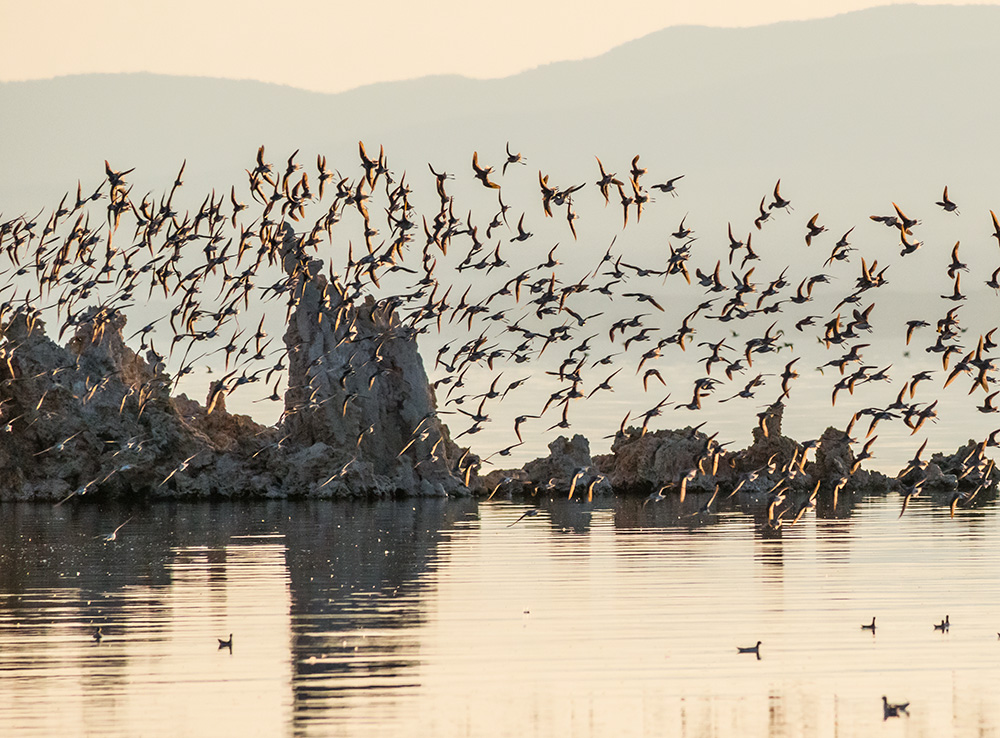
Migrating phalaropes are a summer phenomenon to behold at Mono Lake. When tens of thousands of them arrive they gather and flock—weaving like schools of aerial fish, erupting from and falling to the surface of the lake in giant tornadoes.

Wilson’s and Red-necked phalaropes are shorebirds that rely on alkali fly larvae at Mono Lake in order to molt and double their weight in preparation for migration to South America. These graceful and diminutive shorebirds connect North and South America through a migratory odyssey that spans up to 20,000 miles. Loss of habitat due to human water use and changes forced by a warming climate are threatening phalaropes throughout their range.
Growing concern about the status and distribution of phalaropes is driving efforts to survey these birds at Mono Lake anew. Population data on Wilson’s and Red-necked phalaropes is almost three decades old, but the birds will be counted this summer thanks to California State Parks, Ryan Carle of Oikonos, Dr. Margaret Rubega of the University of Connecticut, and the Mono Lake Committee.
The survey partners are also organizing an international phalarope conference at Mono Lake in June, funded by a Switzer Fellowship Grant. Researchers and conservationists will convene to share scientific information and build new, cooperative relationships to benefit phalaropes at Mono Lake and throughout the Western Hemisphere. Mono Lake is one of very few Great Basin lake habitats not in decline, and its continuing protection—thanks to the public trust and State Water Board decision, as well as Mono Lake’s designation as both an Audubon Important Bird Area and a Western Hemisphere Shorebird Reserve Network site—make it an ideal setting for this gathering.
This post was also published as an article in the Winter & Spring 2019 Mono Lake Newsletter (page 7).
